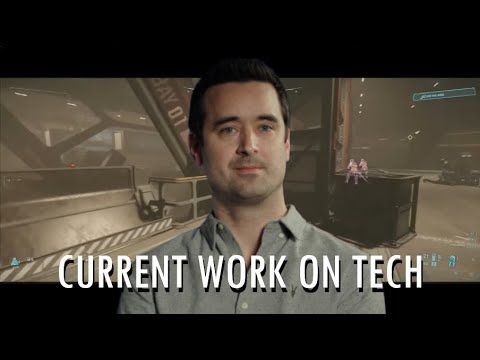Ali Brown, a key developer for Star Citizen, discussed advancements in ray tracing, Vulkan technology, and improvements in performance and stability, emphasizing the importance of careful integration to maintain game stability. He also addressed the challenges of implementing landing cameras and highlighted the positive impact of community feedback on the game’s development.
In a recent update, Ali Brown, who is responsible for new technologies in Star Citizen, shared valuable insights on various ongoing developments in the game. He discussed the progress of ray tracing, which is essential for enhancing the game’s graphics. The team is currently working on ray tracing for global illumination and reflections, although there are still challenges to address, such as noise issues. Additionally, character decals, including tattoos and wounds, are being developed for use in the game’s cinematics and character customization.
The implementation of Vulkan technology is also a significant focus for the developers. They are making continuous improvements to enhance performance and stability, with the aim of enabling new optimizations. The recently showcased Planet Tech V5, now referred to as Genesis, represents a major overhaul in how game content is distributed across planets, promising better visuals and improved gameplay systems. Furthermore, the team is revamping video memory management to help developers stay within budget while allowing players more control over graphical effects.
Ali highlighted the benefits of multi-threading for rendering, noting that it has significantly reduced render job times in complex scenes. However, he cautioned that the effectiveness of this improvement can vary based on hardware and context. The development team is prioritizing stability and quality of life enhancements, especially following the rollout of server meshing, which has had a profound impact on the game. As a result, they have not been able to fully implement a new engine version, as this could introduce instability and disrupt regular updates.
The Squadron 42 team is actively testing Vulkan, which is enabled by default for them, alongside HDR and multi-threaded rendering. While the team is eager to integrate these advancements into Star Citizen, Ali emphasized the importance of careful judgment regarding when to release these updates to minimize risk. The integration of Vulkan features into Star Citizen needs to be synchronized with other code changes to ensure overall stability.
Lastly, Ali addressed the challenges of implementing landing cameras, noting that traditional camera views can make it difficult to judge distances accurately. Instead, he suggested that using alternative rendering techniques could better convey scale and speed during landings. The interaction between developers and the community, as exemplified by Ali’s detailed explanations on Spectrum, fosters transparency and encourages constructive feedback, ultimately benefiting the game’s development.
